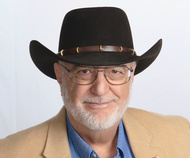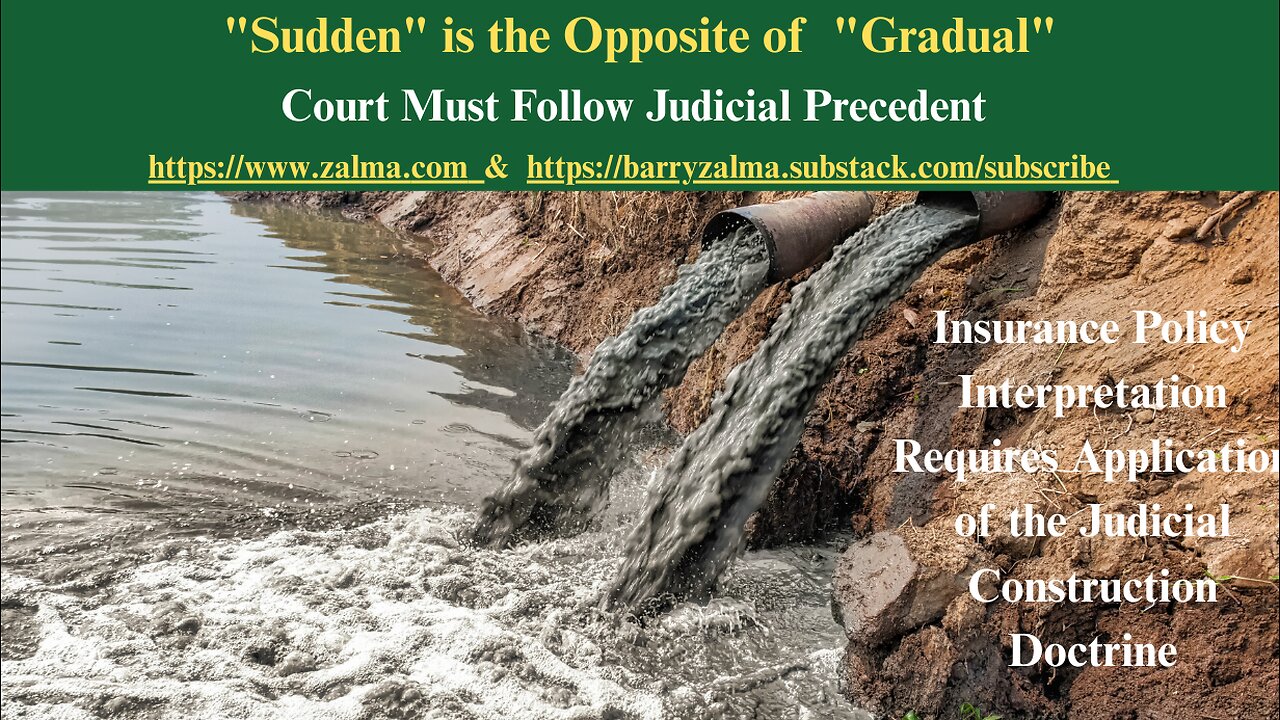
Stacking UM/UIM Coverage Can be Waived
Read the full article at https://lnkd.in/g42rnDph and at https://zalma.com/blog plus more than 4250 posts.
See the full video at https://rumble.com/v1bqydv-stacking-umuim-coverage-can-be-waived.html and at
Tina Bubonovich was involved in a two-car vehicular accident. After recovering the available limits of the other driver’s liability coverage and her own underinsured motorist (UIM) coverage, she filed a claim seeking the proceeds from her resident son’s UIM coverage. When that claim was denied, she sued State Farm Mutual Automobile Insurance Company (State Farm Auto), State Farm Fire and Casualty Company (State Farm Fire), and State Farm, claiming that she was entitled to “stack” her son’s UIM coverage on top of her own recovery.
In Tina Bubonovich v. State Farm Mutual Automobile Insurance Company; State Farm Fire And Casualty Company; State Farm; No. 21-1611; United States Court of Appeals, Third Circuit (July 6, 2022) the District Court dismissed State Farm Fire from the suit because it did not issue the disputed insurance policies, and it also dismissed State Farm because State Farm “is not a proper legal entity.” The Court then granted State Farm Auto’s motion for summary judgment, ruling that Plaintiff could not “stack” her son’s UIM coverage because he had executed a valid stacking waiver.
FACTS
In 2015, the 2006 Scion xB that Plaintiff was driving was hit by another car and she suffered serious injuries. The other driver’s insurance paid Plaintiff $50,000 – the limit of his liability coverage. Pursuant to Plaintiff’s own State Farm Auto policy, State Farm paid her $25,000, the limit of her underinsured motorist coverage.
Plaintiff resides with her son, Nicholas Bubonovich. Nicholas is the named insured on his own State Farm Auto insurance policy. That policy does not list Plaintiff’s Scion as an insured vehicle and has a limit of $100,000 for UIM coverage. Nicholas, however, executed a UIM stacking rejection waiver as to his policy.
Plaintiff made a UIM claim under Nicholas’s coverage, but State Farm Auto denied the claim based on Nicholas’s waiver of his right to “stack” coverage. Such coverage, State Farm Auto contended, was otherwise unavailable because of the household exclusion.
THE ISSUE
Because Plaintiff has already recovered the applicable limit of UIM coverage under her policy, the question is whether she can “stack” her son’s UIM policy on top of her own recovery.
DISCUSSION
The District Court determined that the Pennsylvania Supreme Court answered this question in Craley v. State Farm Fire & Casualty Company, 895 A.2d 530 (Pa. 2006). In Craley, Jayneann Craley was driving with her infant son, Keith Craley, and her mother-in-law, Gloria Craley, when their car was hit by a drunk driver. Jayneann was killed; Keith and Gloria were injured.
Gloria, as well as Jayneann’s husband, Randall Craley, as administrator of Jayneann’s estate and on behalf of Keith, both sought and received uninsured motorist (UM) coverage from Jayneann’s auto insurance policy-the policy that covered Jayneann’s car and on which she was the named insured. The insurer paid the limits of that policy. Randall and Gloria then sought UM coverage under Randall’s separate single-vehicle policy. Yet Randall had executed a waiver of inter-policy stacking coverage prior to the accident. The Supreme Court of Pennsylvania concluded that because the parties were attempting to collect under Randall’s policy, “[i]t is Randall’s policy and its exclusions that are relevant to the legal issues presented in this case.” The Supreme Court held that stacking insurance can be validly waived in single-vehicle policies, and that because Randall had waived the ability to “stack” his insurance the claimants could not recover under his policy.
Here, Plaintiff is trying to recover under Nicholas’s policy. The Third Circuit, therefore, looked to the terms of his policy to determine if Plaintiff may “stack” his coverage on top of her own. That attempt failed. The District Court correctly held that State Farm Auto was entitled to summary judgment.
The Pennsylvania Supreme Court’s reasoning was clear. It and the Third Circuit could only look to the policy under which the claimant is trying to recover to determine if coverage is available. As such, whether Plaintiff waived coverage is beside the point.
Plaintiff’s two remaining arguments fare no better.
First, she argues that she paid for stacking on her policy, so if stacking is not allowed here, she paid an extra premium and received no benefit. Yet she could have stacked her own benefits had she been injured while driving her son’s car.
Second, Plaintiff then argued that if the Third Circuit honors the stacking waiver in Nicholas’s policy, it is effectively voiding all of Nicholas’s UIM coverage. But Nicholas could receive the benefit of his own UIM coverage were he to be injured by an underinsured driver. As such, denying stacking here does not deprive either the Plaintiff or her son of the “benefit of the bargain”: they both get the insurance coverage they’ve paid for.
Finally, because it is clear that this case is controlled by Craley, the Third Circuit declined Plaintiff’s invitation to certify a question to the Pennsylvania Supreme Court.
ZALMA OPINION
People who buy auto insurance often carry more insurance for their liability to third persons yet keep minimal UM/UIM coverages. Tina collected on the UM/UIM coverages she bought. After she was injured she was sorry that she did not buy a higher coverage and attempted to collect on her son’s auto UM/UIM insurance only to find he waived the right to stack insurance. The case teaches that the purchaser of auto insurance should buy the same limits to protect herself as she bought to protect third parties.
(c) 2022 Barry Zalma & ClaimSchool, Inc.
Barry Zalma, Esq., CFE, now limits his practice to service as an insurance consultant specializing in insurance coverage, insurance claims handling, insurance bad faith and insurance fraud almost equally for insurers and policyholders. He practiced law in California for more than 44 years as an insurance coverage and claims handling lawyer and more than 54 years in the insurance business. He is available at http://www.zalma.com and [email protected].
Subscribe and receive videos limited to subscribers of Excellence in Claims Handling at locals.com https://zalmaoninsurance.locals.com/subscribe.
Subscribe to Excellence in Claims Handling at https://barryzalma.substack.com/welcome.
Write to Mr. Zalma at [email protected]; http://www.zalma.com; http://zalma.com/blog; daily articles are published at https://zalma.substack.com.
Go to the podcast Zalma On Insurance at https://anchor.fm/barry-zalma; Follow Mr. Zalma on Twitter at https://twitter.com/bzalma; Go to Barry Zalma videos at Rumble.com at https://rumble.com/c/c-262921; Go to Barry Zalma on YouTube- https://www.youtube.com/channel/UCysiZklEtxZsSF9DfC0Expg; Go to the Insurance Claims Library – https://zalma.com/blog/insurance-claims-library/
Posted on January 2, 2026 by Barry Zalma
ZIFL – Volume 30 Number 1
THE SOURCE FOR THE INSURANCE FRAUD PROFESSIONAL
See the video at https://rumble.com/v73nifg-zalmas-insurance-fraud-letter-january-2-2026.html and at https://youtu.be/vZC1e-_qwDg
Supreme Court of Louisiana Removes Judge
Judge Who Lied to Get Elected Cannot Serve
In In Re: Judge Tiffany Foxworth-Roberts, No. 2025-O-01127, Supreme Court of Louisiana (December 11, 2025) the Louisiana Supreme Court in an opinion by Chief Justice Weimer dealt with the recommendation of the Judiciary Commission of Louisiana (Commission) that Judge Tiffany Foxworth-Roberts be removed from office for:
1. making false and misleading statements regarding her judicial campaigns;
2. making false and misleading statements to police investigating the reported burglary of her car; and
3. withholding information and providing false, incomplete, or misleading information during the investigation by the Office of Special Counsel (OSC), as well as in the proceedings before the Commission....
Montana County Attorney Admits to Insurance Fraud & Is Only Suspended from Practice for 60 Days
Post 5251
Read the full article at https://lnkd.in/gnBaCjmv, see the video at https://lnkd.in/gfpVsyAd and at https://lnkd.in/gC73Nd8z, and at https://zalma.com/blog plus more than 5250 posts.
A Lawyer Who Commits Insurance Fraud and Pleas to a Lower Charge Only Suspended
In The Matter Of: Naomi R. Leisz, Attorney at Law, No. PR 25-0150, Supreme Court of Montana (December 23, 2025) the Montana Office of Disciplinary Counsel (ODC) filed a formal disciplinary complaint with the Commission on Practice (Commission) against Montana attorney Naomi R. Leisz.
On September 25, 2025, Leisz tendered a conditional admission and affidavit of consent. Leisz acknowledged the material facts of the complaint were true and she had violated the Montana Rules of Professional Conduct as alleged by ODC.
ADMISSIONS
Leisz admitted that in April 2022, her minor son was involved in a car accident in which he hit a power pole. Leisz’s son ...
Montana County Attorney Admits to Insurance Fraud & Is Only Suspended from Practice for 60 Days
Post 5251
Read the full article at https://lnkd.in/gnBaCjmv, see the video at https://lnkd.in/gfpVsyAd and at https://lnkd.in/gC73Nd8z, and at https://zalma.com/blog plus more than 5250 posts.
A Lawyer Who Commits Insurance Fraud and Pleas to a Lower Charge Only Suspended
In The Matter Of: Naomi R. Leisz, Attorney at Law, No. PR 25-0150, Supreme Court of Montana (December 23, 2025) the Montana Office of Disciplinary Counsel (ODC) filed a formal disciplinary complaint with the Commission on Practice (Commission) against Montana attorney Naomi R. Leisz.
On September 25, 2025, Leisz tendered a conditional admission and affidavit of consent. Leisz acknowledged the material facts of the complaint were true and she had violated the Montana Rules of Professional Conduct as alleged by ODC.
ADMISSIONS
Leisz admitted that in April 2022, her minor son was involved in a car accident in which he hit a power pole. Leisz’s son ...
Court Must Follow Judicial Precedent
Post 5252
Read the full article at https://www.linkedin.com/pulse/sudden-opposite-gradual-barry-zalma-esq-cfe-h7qmc, see the video at and at and at https://zalma.com/blog plus more than 5250 posts.
Insurance Policy Interpretation Requires Application of the Judicial Construction Doctrine
In Montrose Chemical Corporation Of California v. The Superior Court Of Los Angeles County, Canadian Universal Insurance Company, Inc., et al., B335073, Court of Appeal, 337 Cal.Rptr.3d 222 (9/30/2025) the Court of Appeal refused to allow extrinsic evidence to interpret the word “sudden” in qualified pollution exclusions (QPEs) as including gradual but unexpected pollution. The court held that, under controlling California appellate precedent, the term “sudden” in these standard-form exclusions unambiguously includes a temporal element (abruptness) and cannot reasonably be construed to mean ...


Lack of Jurisdiction Defeats Suit for Defamation
Post 5250
Posted on December 29, 2025 by Barry Zalma
See the video at and at
He Who Represents Himself in a Lawsuit has a Fool for a Client
In Pankaj Merchia v. United Healthcare Services, Inc., Civil Action No. 24-2700 (RC), United States District Court, District of Columbia (December 22, 2025)
FACTUAL BACKGROUND
Parties & Claims:
The plaintiff, Pankaj Merchia, is a physician, scientist, engineer, and entrepreneur, proceeding pro se. Merchia sued United Healthcare Services, Inc., a Minnesota-based medical insurance company, for defamation and related claims. The core allegation is that United Healthcare falsely accused Merchia of healthcare fraud, which led to his indictment and arrest in Massachusetts, causing reputational and business harm in the District of Columbia and nationwide.
Underlying Events:
The alleged defamation occurred when United ...


Zalma’s Insurance Fraud Letter
Read the full article at https://lnkd.in/dG829BF6; see the video at https://lnkd.in/dyCggZMZ and at https://lnkd.in/d6a9QdDd.
ZIFL Volume 29, Issue 24
Subscribe to the e-mail Version of ZIFL, it’s Free! https://visitor.r20.constantcontact.com/manage/optin?v=001Gb86hroKqEYVdo-PWnMUkcitKvwMc3HNWiyrn6jw8ERzpnmgU_oNjTrm1U1YGZ7_ay4AZ7_mCLQBKsXokYWFyD_Xo_zMFYUMovVTCgTAs7liC1eR4LsDBrk2zBNDMBPp7Bq0VeAA-SNvk6xgrgl8dNR0BjCMTm_gE7bAycDEHwRXFAoyVjSABkXPPaG2Jb3SEvkeZXRXPDs%3D
Zalma’s Insurance Fraud Letter (ZIFL) continues its 29th year of publication dedicated to those involved in reducing the effect of insurance fraud. ZIFL is published 24 times a year by ClaimSchool and is written by Barry Zalma. It is provided FREE to anyone who visits the site at http://zalma.com/zalmas-insurance-fraud-letter-2/
Zalma’s Insurance Fraud Letter
Merry Christmas & Happy Hannukah
Read the following Articles from the December 15, 2025 issue:
Read the full 19 page issue of ZIFL at ...













